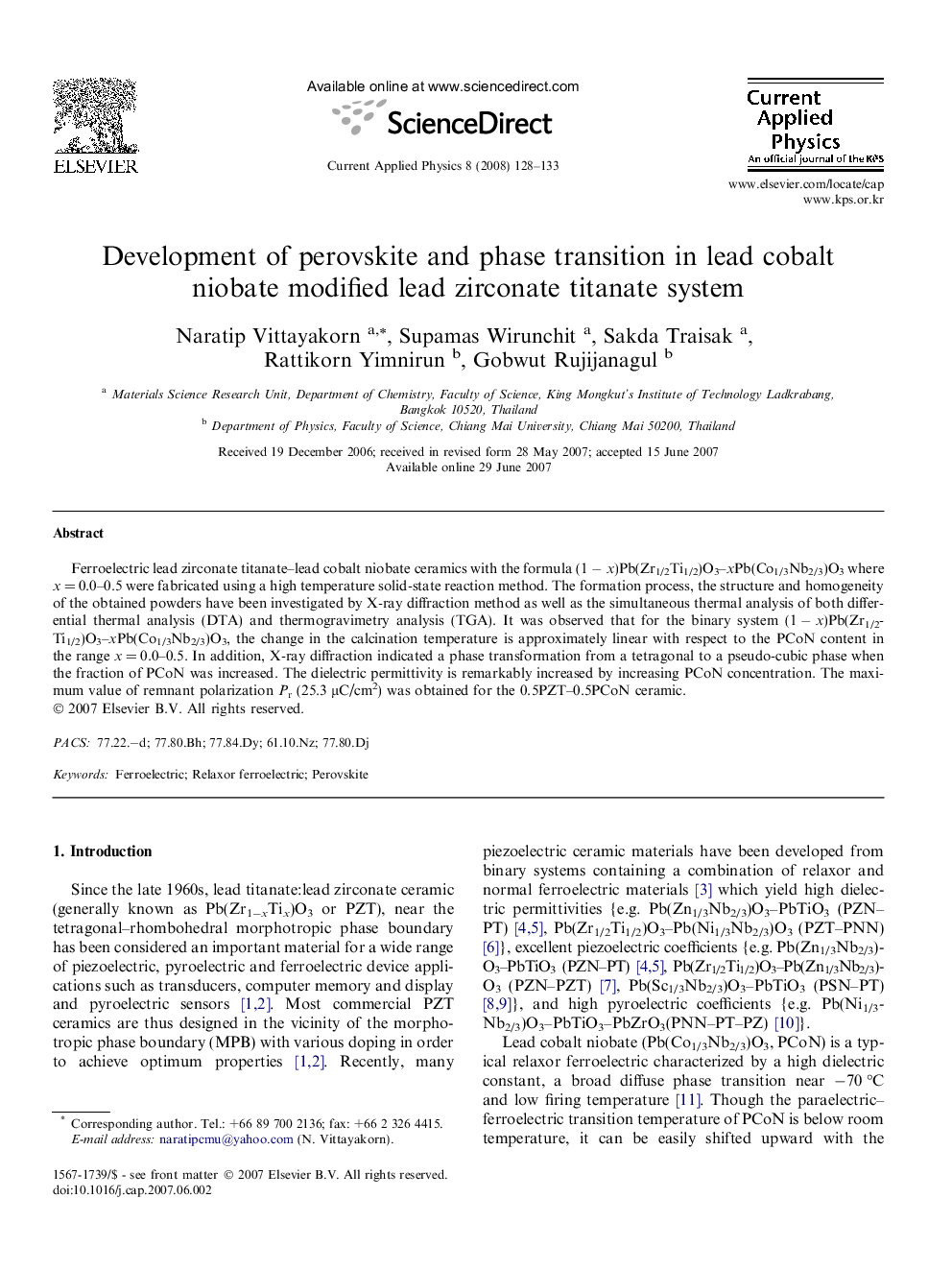| Article ID | Journal | Published Year | Pages | File Type |
|---|---|---|---|---|
| 1787317 | Current Applied Physics | 2008 | 6 Pages |
Ferroelectric lead zirconate titanate–lead cobalt niobate ceramics with the formula (1 − x)Pb(Zr1/2Ti1/2)O3–xPb(Co1/3Nb2/3)O3 where x = 0.0–0.5 were fabricated using a high temperature solid-state reaction method. The formation process, the structure and homogeneity of the obtained powders have been investigated by X-ray diffraction method as well as the simultaneous thermal analysis of both differential thermal analysis (DTA) and thermogravimetry analysis (TGA). It was observed that for the binary system (1 − x)Pb(Zr1/2Ti1/2)O3–xPb(Co1/3Nb2/3)O3, the change in the calcination temperature is approximately linear with respect to the PCoN content in the range x = 0.0–0.5. In addition, X-ray diffraction indicated a phase transformation from a tetragonal to a pseudo-cubic phase when the fraction of PCoN was increased. The dielectric permittivity is remarkably increased by increasing PCoN concentration. The maximum value of remnant polarization Pr (25.3 μC/cm2) was obtained for the 0.5PZT–0.5PCoN ceramic.
